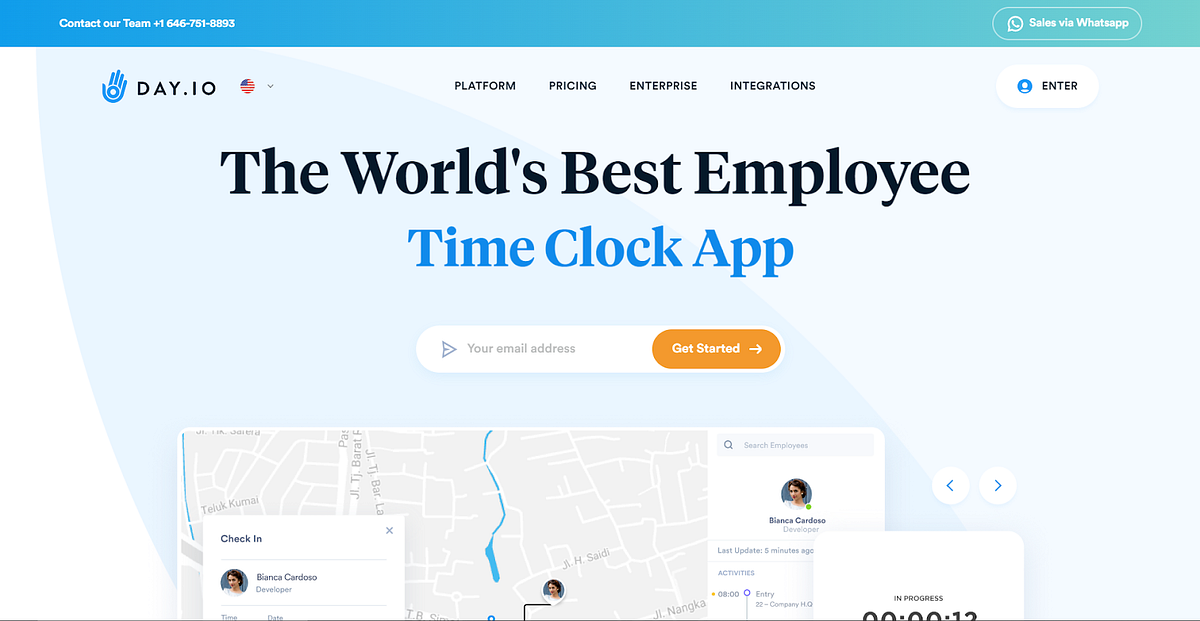When it comes to productivity, managers always want to make sure it is as high as possible. Workers need to churn out quality work at a consistent pace in order to keep the business running smoothly. And, while workers are a key part of the productivity equation, managers also need to be aware of other factors that can affect how quickly tasks are completed.
One factor that can greatly impact your employees’ productivity is cycle time. It’s something that is often forgotten, but it is important to understand and manage if you want your team to be as efficient as possible. Without understanding this metric, there’s a possibility that you could lose out on a lot of potential productivity.
In this article, we’ll cover the concept of cycle time in more detail so that you can learn how to apply it within your business for a more productive team. Let’s go!
What is cycle time?
Cycle time pertains to the time a team spends in producing a product or service. It is the elapsed time between the start and end of a particular task or unit of work. In other words, cycle time is the time it takes to go from an idea to a finished product. The shorter the cycle time, the faster the team can produce new products or services.
It is also important to track and measure cycle time so that you can identify areas where improvements can be made. For example, if cycle time is too long, the team may be working on tasks that are not essential, or they may be duplicating work.
Cycle time is a critical factor in productivity, and it should be one of your primary considerations as a manager when designing a process.

How to calculate cycle time
Calculating cycle time is relatively straightforward — all you need to do is divide the net production time (NPT) by the number of units produced. For example, if it takes 10 minutes to produce 10 units, the cycle time would be 1 minute (10/10 = 1).
However, you also need to account for idle time. This is the time when the machine is not actively producing anything, but is still in use. To do this, you need to subtract the idle time from the net production time. In the example above, if it takes 10 minutes to produce 10 units and the machine is idle for 2 minutes, the cycle time would be 8 minutes (10–2 = 8).
Things you can do to improve your cycle time
Although the quality of work is important and should always be the priority, monitoring the cycle time of employees and taking steps to improve it can have a significant impact on productivity. Aside from having stricter deadlines, it gives the employees an internal need to optimize their time efficiently.
Here are a few things you can do to improve your team’s cycle time:
Goal setting
Every project assigned to you has a goal. It may be to produce a certain number of widgets in a day or to have a prototype ready for testing by the end of the week. Whatever that goal is, it needs to be achievable and measurable; otherwise, you’ll constantly be struggling to meet deadlines and your cycle time will suffer.

To improve your cycle time, you need to break it down into smaller goals that you can accomplish in a shorter amount of time. This may mean setting a goal to have a certain number of widgets completed each hour, or to have the prototype ready for testing by the end of the day.
Make sure that these goals are realistic and achievable. If you constantly fall short, it will only frustrate you and slow your cycle time down even more. For example, if your goal is to have a prototype ready for testing by the end of the day with only three hours left, you’re going to be pushing yourself too hard. It’s better to get a full night’s sleep and try tomorrow!
Process policies
One of the secrets to reducing cycle time is adding process policies, which enable you to determine how different tasks should be done and how they should be linked together. These policies can also help speed up the process while ensuring that quality is maintained.
There are three types of policies that may be implemented: precedence policies, priority policies, and priority policies.
- Precedence policies establish the order in which the employees should complete activities.
- Flow regulations govern how tasks are connected.
- Resource regulations identify who may and cannot work on which tasks and when.
You can also use buffers to improve cycle time, which are essentially waiting areas that allow for a task to be completed before the next one begins. This helps to prevent bottlenecks and keeps the process moving.
Multitasking elimination
Did you know that practicing multitasking can cause damage to both your brain and career? According to research from Stanford University, multitasking is less productive than simply focusing on one task at a time. Aside from that, employees who are always bombarded with different pieces of work at the same time are more prone to making mistakes!
To focus on improving cycle times, it’s important to eliminate distractions and focus on the task at hand. This means turning off notifications on your phone, working in a quiet environment, and avoiding unnecessary meetings.

Reporting and analytics
Project delays are mostly caused by the delay of time it takes in making a decision. The reason behind this is the lengthy time in accumulating verified data, planning, and getting sign-offs from different stakeholders.
This is where cycle time comes in, as it measures the time it takes for a task to be completed. Reducing the cycle time will help reduce the decision-making time and make your projects more efficient.
Through effective reporting and analytics, you get to determine how long it takes for different tasks to be completed, identify the bottlenecks, and work on resolving them. You can also use this data to improve your processes and make better decisions.
For example, you may find out that the time to get a design approved is causing delays in the project. Here, you can work on improving communication between stakeholders so that decisions can be made faster.
Another thing that can help you with your cycle time monitoring is by using apps that can help you keep track of your times. Several apps can do this, and most of them are available for Android or iOS devices.
If you’re looking for a software solution to help with cycle time tracking on your Android device, you may benefit from Day.io, our user-friendly and comprehensive time tracking solution. We’re an emerging platform proven to be effective for tracking cycle times and improving productivity.
What is Day.io?

Day.io is one of the greatest time clock applications available on the market today. This tool is designed to measure time spent on particular activities and projects; you can use the app to set timers for specific tasks, which subsequently collects time data that can be exported as a CSV file.
The app also offers a variety of features for businesses, such as invoicing, project management, and team collaboration tools. Day.io is a great option for businesses that need to keep track of time working on specific tasks to generate invoices or accurately bill clients.
Additionally, you can integrate Day.io with other HR platforms, such as Gusto, Namely, and Zenefits, to manage employee time tracking and payroll.
In the future, Day.io has plans on expanding the platform by adding specific project time tracking and team messaging for businesses.
How to create an account on Day.io
To sign up and start using Day.io, all you need to do is input your email and password. Once you have confirmed your account by clicking on the link in the email sent to you, you will be able to log in and start using the app!
If you want to check the premium features, you can start a free trial by clicking on the Start a Free Trial button. With our free pass, you can use all the features of Day.io for 7 days with no charges whatsoever.

Final thoughts
Being aware of cycle time can help employers and workers alike to optimize their productivity. It is important to be constantly evaluating and tweaking the process so that your cycle time becomes as short as possible.
For employers, this may mean taking a step back and looking at the big picture — where can optimizations be made? What steps can be streamlined or eliminated? Is there a way to produce the same output with fewer steps?
For workers, it means being aware of the time they are taking on each task and looking for ways to speed up their process.
There is always room for improvement, and cycle time is one area that is often overlooked. If you want help in tracking the time of your productivity, Day.io is a time tracking platform you can trust. Sign up for a free trial today!
